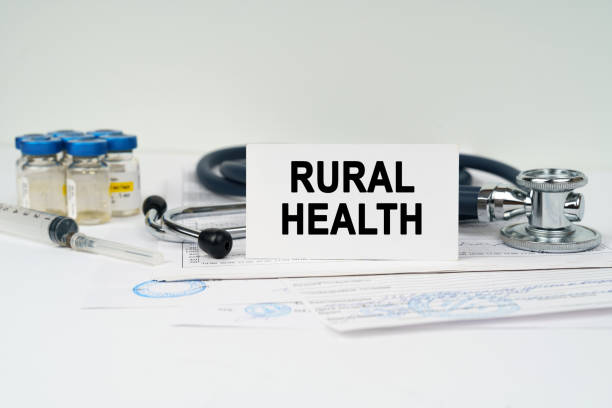In an era of technological advancements, remote health solutions have emerged as a transformative force, addressing healthcare disparities in remote and rural communities. With approximately 60 million people, or 20% of the U.S. population, residing in rural areas, accessible healthcare is paramount. This article explores the significant impact and potential of remote health technologies and identifies areas in the U.S. where remote healthcare access is most critical. In addition, we present the latest statistics on remote health monitoring technology grounded in reliable sources.
The Technological Landscape of Remote Health Solutions
Rural communities encounter barriers to accessing health care, including long travel distances to medical facilities and fewer options for care nearby. Rural residents in the United States have higher premature mortality rates than urban residents for 5 of the leading causes of death: heart disease, cancer, unintentional injuries, chronic lower respiratory disease, and stroke. As a result, rural communities tend to utilize health care less, which can lead residents to delay seeking care until minor health issues become emergencies.
Limited access to preventative services and consistent treatment poses risks for worse health outcomes among rural populations. It also places economic and logistical strains on patients when they are forced to travel for urgent care and on the overall health system that must absorb costly emergency room visits that could have been prevented.
Telemedicine Platforms
Telemedicine platforms are the cornerstone of remote health solutions. They offer an infrastructure that provides private, secure, and HIPAA-compliant remote health solutions, services, and support. Many telemedicine platforms allow for virtual consultations, remote health monitoring technology, telepharmacy, and the storage of medical records.
Telehealth benefits rural communities by providing access to healthcare professionals without needing physical travel. Sufficient broadband connectivity is key to supporting such telehealth services and enabling health information exchange. However, broadband access remains insufficient in many rural areas, hindering telehealth capabilities in patients’ homes and healthcare facilities. Closing the broadband gap is essential for overcoming barriers to telehealth and preventing new healthcare disparities.
Key Technologies in Remote Health Solutions
Remote health monitoring technology systems enable care in remote areas with limited connectivity. Solutions like mobile health applications and wearable devices can track health metrics, vital signs, and potential issues for patients and providers in real-time. While traditional remote monitoring relies on consistent connections, mobile apps can store and transmit patient data when networks become available again.
Remote health technology aims to transmit health data readings to healthcare providers even when facing connectivity challenges in rural regions. Rural telehealth facilitates proactive healthcare and chronic condition management regardless of location or connectivity barriers; these remote monitoring technologies are vital for serving populations in isolated areas and advancing health equity.
Identifying Areas in Need
While remote health solutions offer immense potential, their impact is greatest in areas facing healthcare disparities, including rural communities with limited healthcare access. Insufficient rural broadband hinders telehealth adoption, with only 72% of rural areas and 65% of tribal lands having high-speed internet as of 2021. This affects patients’ ability to engage in video consultations, share health information, and manage health needs remotely.
Expanding broadband access is crucial for enabling rural and underserved communities that stand to benefit the most from telehealth to implement these vital technologies. Closing the digital divide is key to ensuring health equity through telehealth solutions.
Appalachia
The Appalachian region, spanning parts of 13 states, has long faced challenges in healthcare accessibility. CDC data from 2011 shows that residents in distressed Appalachian counties designated by the Appalachian Regional Commission have 1.4 times higher self-reported diabetes rates than residents of nondistressed counties, regardless of race. Grants like the Growing Rural Economies with Access to Technology (GREAT) program focus on deploying broadband to underserved areas.
Rural communities in Appalachia have shown particularly high fiber broadband uptake with the support of government subsidies. However, reimbursement regulations do not accommodate for all patient care needs. Remote health solutions, including mobile apps for data transmission, can bridge the gap by providing virtual consultations, monitoring chronic conditions, and delivering healthcare resources to underserved populations.
Native American Reservations
Many Native American reservations, often located in remote areas, struggle with inadequate healthcare infrastructure. Remote health solutions, utilizing apps for data transmission, can enhance access to medical services, addressing the unique healthcare needs of these communities. The Indian Health Service offers telehealth services that include specialty care in behavioral health, dermatology, endocrinology, wound management, and rheumatology, though availability varies by location.
IHS operates two national telehealth programs:
- The IHS-Joslin Vision Network Teleophthalmology Program aims to prevent diabetes-related blindness.
- The Telebehavioral Health Center of Excellence Telebehavioral Health Program provides culturally sensitive telebehavioral health services to American Indian and Alaska Native populations.
- Additionally, IHS has numerous regional telehealth programs.
Midwest and Great Plains
Rural areas in the Midwest and Great Plains frequently experience healthcare shortages. Implementing remote health technologies, with a focus on app-based data transfer, can alleviate the burden on local healthcare facilities and improve residents’ overall health outcomes. For example, Altru Health Systems, a North Dakota-based nonprofit health system, provides telehealth services and expanded services during the COVID-19 pandemic to provide safer and broader care.
Altru enabled almost all of its 393 providers to provide video visits, phone encounters, message-based eVisits, and provider-to-provider consultations to serve patients across its coverage area. As a member of the Great Plains Telehealth Resource and Assistance Center (gpTRAC), Altru helps advance best practices in telehealth implementation. gpTRAC provides free telehealth training, consultations, and resources to healthcare organizations seeking to implement, expand, or improve telehealth services. gpTRAC is federally funded and housed at the University of Minnesota.
Understanding Remote Health Solutions
To gauge the impact of remote health solutions, it’s essential to examine recent statistics that reflect their adoption and effectiveness. Reconnect4Health in Greenville, NC, is a remote patient monitoring platform for chronic disease management that reports a nurse-patient ratio of 1:100, as opposed to a clinical ratio of 1:7. This statistic underscores the growing acceptance and reliance on remote health solutions among populations that historically faced challenges in accessing healthcare.
The UCDavis Health telehealth program ACTIVATE uses remote health solutions in partnership with community health centers to improve the well-being of underserved and rural communities. In the program’s first six months, the initial 50 patients transmitted over 10,000 glucose and blood pressure readings. By the program’s conclusion, most participants had achieved healthy glucose levels and lower blood pressure.
In conclusion, remote health solutions are not just technological innovations; they represent a pivotal shift in healthcare accessibility, particularly for those in rural communities. Though remote health solutions expanded during the pandemic, they still failed to reach many underserved populations. These significant disparities require dedicated efforts to increase access and eliminate barriers among these groups.
Closing these telehealth disparities is vital to achieving health equity. As advancements continue, the hope is that remote health technologies will ensure that quality healthcare is available to all, regardless of geographical location.






